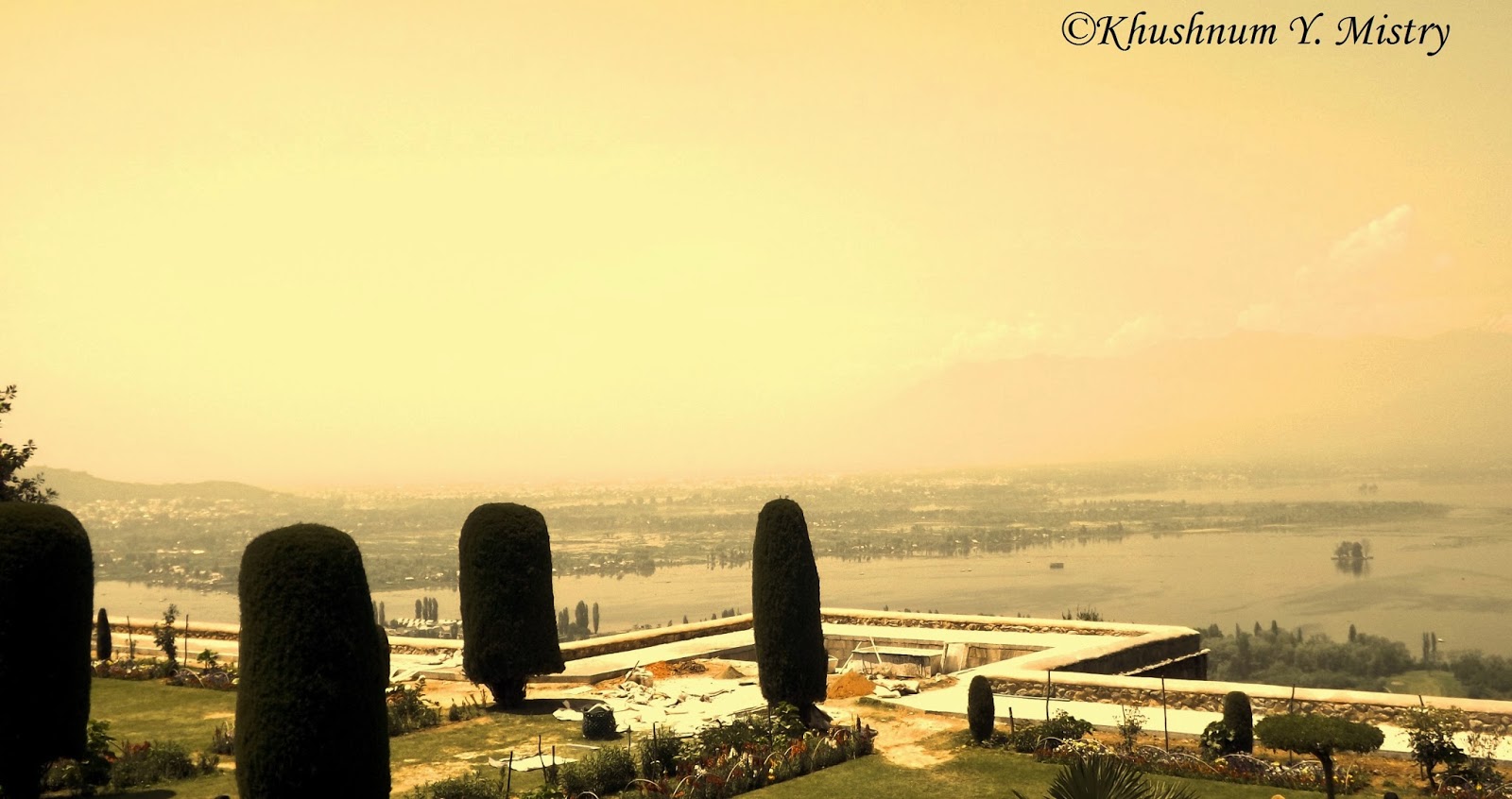A one day Srinagar
city tour is indeed the best way to experience the pulse, beauty and its ever
changing frames. Just like a there are two sides to a coin, the new Srinagar is
the commercial beauty and old Srinagar is filled with the richness of the
Mughal empire history and ancient architecture. I would strongly
advise you to start the city tour by 8 am to avoid traffic.
To read more, click on http://www.mukti4u2.dk/Srinagar_Shankaracharya_Temple.htm
The car takes you
only up to a certain point, after which you need to climb 40 stairs to enter
the temple premises.
The temple is completely built of stone, and as the sun’s ray hit, it shines like granite. A huge Shivling (a black stone considered to be a Hindu deity) with a huge bronze snake encircling it is grounded in the middle of this temple. At a time, this temple can only occupy 6 people and a pujari (priest).
Distance: 20 minutes from Dal Lake, Gate No. 1
Entry Fee: Free
Most tourists call it Pari Mahal, whereas the locals call it ‘Peer Mahal’. This palace could definitely be passed off as a residing abode for fairies.
There are six ascending terraces at Pari Mahal, which display unique architectural elements of the mid-seventeenth century.
 |
| The Quieter Side of Dal Lake |
Shankaracharya Temple
The ancient Sankaracharya Temple, also known as the Jyesteswara Temple, is found on top of the hill Takht-i-Sulaiman or Throne of Solomon, at the height of 350m. Overlooking the lake, Adi Shankaracharya (788-820AC) lived, meditated and did Tapas (penance) here to review Hinduism which had been eclipsed by Buddhism.To read more, click on http://www.mukti4u2.dk/Srinagar_Shankaracharya_Temple.htm
 |
| City View from Shankaracharya Temple |
 |
| This image is taken from postcards and copied from http://www.mukti4u2.dk/Srinagar_Shankaracharya_Temple.htm |
The temple is completely built of stone, and as the sun’s ray hit, it shines like granite. A huge Shivling (a black stone considered to be a Hindu deity) with a huge bronze snake encircling it is grounded in the middle of this temple. At a time, this temple can only occupy 6 people and a pujari (priest).
During the olden
times, this place would be the best place to meditate, pray or simply enjoy the
beauty of the city. Photography is not allowed here, so leave your cameras and
cell phones in the car or else you will need to deposit them outside the temple!
Distance: 20 minutes from Dal Lake, Gate No. 1
Entry Fee: Free
Chasme Shahi
 |
| Chasme Shahi |
‘Chasme’ in
Kashmiri means ‘water’ and ‘Shahi’ means ‘royal’ which is a great way of
describing one of the oldest hot water spring found in Srinagar. On entering
the Chasme Shahi, you are welcomed to a beautiful lawn with colourful flowers.
 |
| Fountains and Gardens in Chasme Shahi |
In the centre of this garden, is a small stone funnel from where the hot water springs flow. Hot water springs are rich in chlorides that cure ailments like rheumatism, post and pre-operative surgeries and problems with the central nervous system.
 |
| The Royal Water Tomb |
 |
| Hot Water Spring |
 |
| Chasmr Shahi |
Distance: 20 minutes from Chasme Shahi
Entry fee: Rs. 10/-Botanical Garden
Although, the
botanical garden is beautiful with lots of flowers and custom shaped trees,
it can be given a miss!
Distance: 5 minutes from Chasme Shahi
Entry Fee: Rs. 10/-
Pari Mahal
Most tourists call it Pari Mahal, whereas the locals call it ‘Peer Mahal’. This palace could definitely be passed off as a residing abode for fairies.
The gardens were established by Prince Dara Shikoh in the mid-1600s on the ruins of a Buddhist monastery. Dara, the son of Emperor Shah Jahan, followed the Qadiri order of Sufi Islam and made the garden for his tutor. It was further used as an observatory, useful for teaching astrology and astronomy.
There are six ascending terraces at Pari Mahal, which display unique architectural elements of the mid-seventeenth century.
Distance: 20 minutes from the Botanical Gardens
Entry fee: Rs. 10/-
Nishat Bagh
Nishat Bagh is a very average garden for the
kids to play and can be definitely skipped.
Shalimar Bagh
Shalimar Bagh is
considered to be the finest Mughal-style hill garden and was made by the Mughal
Emperor Jahangir in 1619 for his beloved wife, Nurjahan. The Shalimar Bagh was
built not merely as garden but also served as the summer residence of the Mughals.
The water canals and fountains are lined up parallel bordered with beautiful scented flowers and old architecture transports you to the Mughal era.
There are four
main areas or shamianas or terraces, the lower one is connected to the road.
The second is considered to be the public garden also called as the Hall of the
Public Audience. This area still has a small black marble throne.
 |
| The Second Area also called Hall of the Public |
 |
| Black Marble Stone |
The third area is
wider with two shallow terraces with the Hall of Private Audience.
 |
| View from the Hall of the Private Audience |
The fourth terrace
area is the Zenana Garden that was reserved for the royal ladies of the court
with small guard-rooms on the entrance. This part of the garden is definitely the most
beautiful.
The Shalimar Bagh forms an ideal picture perfect sight; the water dancing, the flowers adding vibrancy to the already cheerful atmosphere and your mind just soaking it all in!
Distance: 20 minutes from the Botanical Gardens
Entry fee: Rs. 15/-
Continue to Srinagar City Tour - Part 2...

















No comments:
Post a Comment